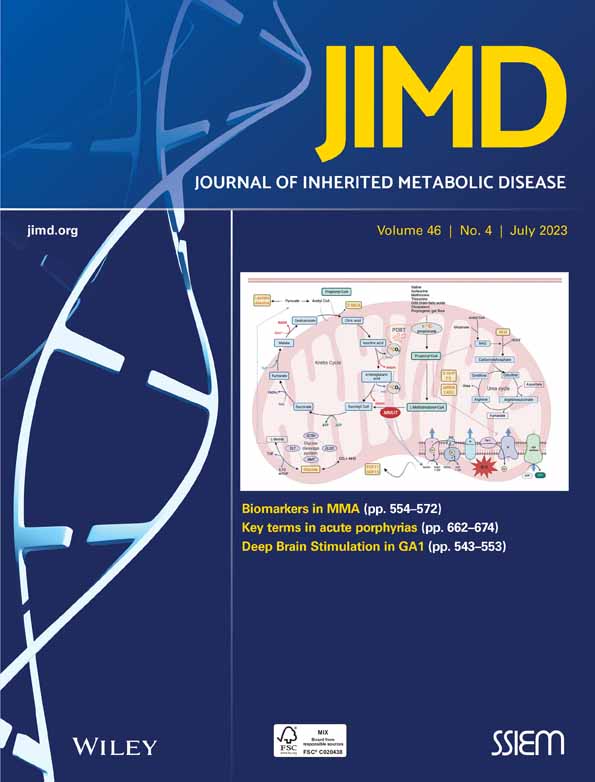Hepatic presentations of mitochondrial DNA depletion syndrome in children: A single tertiary liver centre experience
Abstract
Mitochondrial DNA depletion syndromes (MDDS) are a heterogeneous group and the hepato-cerebral phenotype is highly variable. A single centre retrospective study of all patients with MDDS presenting between January 2002 and September 2019. In total, 24 (13 male) children were identified: 7 POLG, 7 DGUOK, and 10 MPV17. Median age at presentation was 3 months (0.06–189). Sixteen had acute liver failure (ALF) and eight chronic cholestasis and/or raised transaminases. Four POLG patients developed liver injury after starting sodium valproate; Six DGUOK patients had neonatal ALF (median age 12 days), liver involvement developed at a median age of 2.5 and 11 months with MPV17 and POLG patients, respectively. Eighteen patients showed neurological involvement. Liver histology from 10 patients showed variable degrees of necrosis, steatosis, cholestasis, and fibrosis. Mitochondrial respiratory chain enzymology was abnormal in 5. Seventeen patients died at a median age of 8 months (range, 1–312) after a median time of 5.6 months from presentation: 5/7 POLG at 53 months, 7/7 DGUOK at 8 months and 5/10 MPV17 at 8 months. Three patients with MPV17 mutations received liver transplant (LT) at a median age of 24 months (range 5–132): all alive at 19, 18 and 3 years post-LT. Mutations in DGUOK and MPV17 genes are associated with a severe clinical phenotype characterised by early-onset/neonatal ALF or rapidly progressive cholestasis and death before 12 months of age. A subset of MPV17 patients was amenable to LT. Consideration for LT in infantile ALF remains difficult and rapid genetic testing is advised.
CONFLICT OF INTEREST STATEMENT
The authors declare no conflicts of interest.
Open Research
DATA AVAILABILITY STATEMENT
Article has no associated data.




